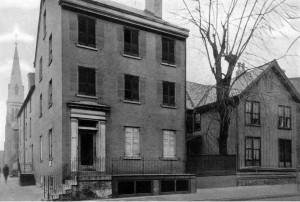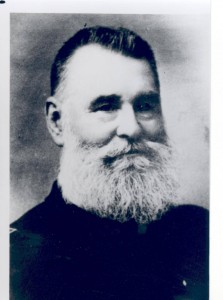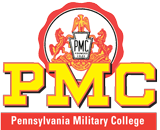 In 1821, John Bullock started the Bullock School, a boarding school for boys, in Wilmington, Delaware. He was described as a good teacher, administrator and positive influence on his boys. The school quickly became recognized for its academic instruction and character building. Samuel Alsop, an expert mathematician and friend of Bullock, moved from Philadelphia and became a teacher at the Bullock School. By 1846, Bullock’s health was failing and Alsop had taken over the responsibilities of running the school. After Bullock’s death the following year, Alsop continued to operate the school. He was not interested, however, in expanding it and sold the school and its equipment to Theodore Hyatt in 1853.
In 1821, John Bullock started the Bullock School, a boarding school for boys, in Wilmington, Delaware. He was described as a good teacher, administrator and positive influence on his boys. The school quickly became recognized for its academic instruction and character building. Samuel Alsop, an expert mathematician and friend of Bullock, moved from Philadelphia and became a teacher at the Bullock School. By 1846, Bullock’s health was failing and Alsop had taken over the responsibilities of running the school. After Bullock’s death the following year, Alsop continued to operate the school. He was not interested, however, in expanding it and sold the school and its equipment to Theodore Hyatt in 1853.
 Theodore Hyatt made a commanding appearance. He was tall and physically striking. Born in Westchester County, New York, his formative years were spent on a farm. As a youth, he attended the local district school. With the help of the local Presbyterian minister, Hyatt was tutored and entered Union College as a sophomore in 1846. In 1847 he transferred to Princeton University where he graduated in 1849. After graduation, Hyatt accepted an invitation to teach at the parochial school of the local Presbyterian Church in Wilmington, Delaware.
Theodore Hyatt made a commanding appearance. He was tall and physically striking. Born in Westchester County, New York, his formative years were spent on a farm. As a youth, he attended the local district school. With the help of the local Presbyterian minister, Hyatt was tutored and entered Union College as a sophomore in 1846. In 1847 he transferred to Princeton University where he graduated in 1849. After graduation, Hyatt accepted an invitation to teach at the parochial school of the local Presbyterian Church in Wilmington, Delaware.
The Bullock School was renamed Hyatt’s Select School for Boys. The academic instruction consisted of English, Science and the Classics. Each Thursday, students spent the day studying composition, declamation (rhetorical exercise), reading, and spelling. In addition each student was expected to spend three hours in recitation. Despite the growing reputation of the school, Hyatt sought methods to impart gentlemanly conduct on his students.
According to legend, in the fall of 1858 Theodore Hyatt observed some of his students practicing military drills with broomsticks in the recreation room of the school. Infantry Drills then became part of the school because they provided physical exercise and impart habits of “order, neatness, system, punctuality, and gentlemanly carriage” in every Cadet. Uniformity was important and Cadets were required to wear uniforms. These consisted of
… a frock coat of dark blue cloth, single breasted, with velvet collar to turn down,with one row of ten gilt buttons, of the School pattern, to button up to the throat. The pantaloons will be of dark blue cloth, with a black cord one-eighth of an inch thick set in the outer seam. Caps of black cloth in the school pattern were to be worn.
This was the birth of the military program at PMC. Alumni continue to celebrate the legend of the broomsticks (called “The Broom Drill”) by parading with brooms during Homecoming.
Note: While the “legend” may be true, according the Circular (school catalogue) for 1858, which was printed during the summer, both Infantry Drill and uniforms were to be introduced at the opening of School on September 6, 1858. If the cadets drilled with broomsticks in the fall, it was because the Governor of Delaware had not yet given the school the military arms for drill.

